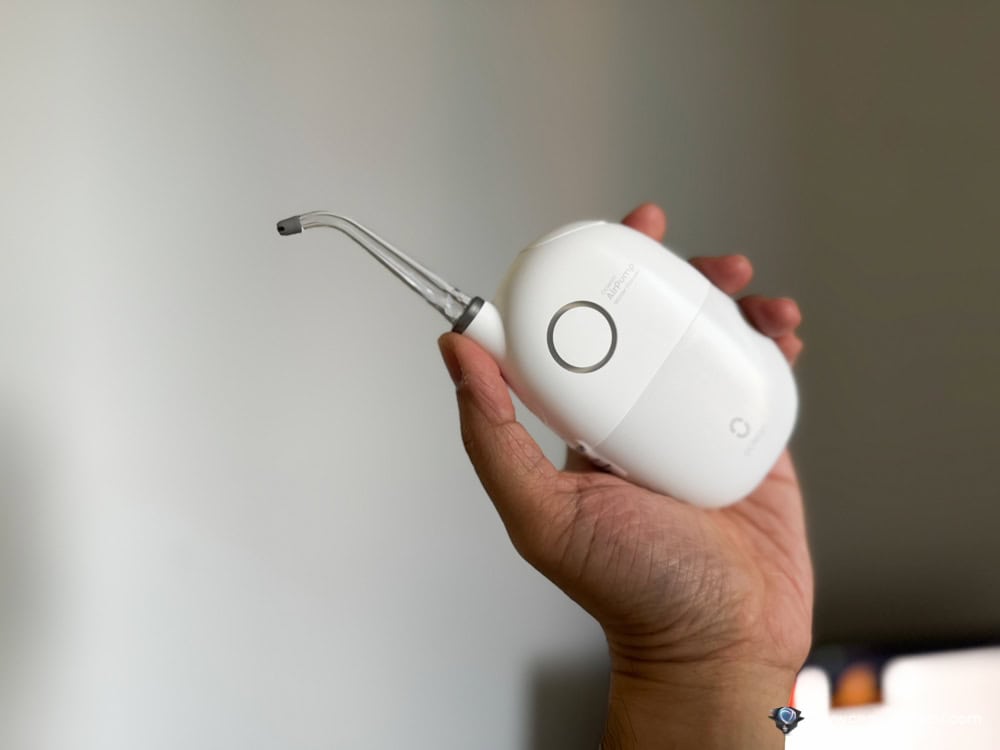The Withings Sleep Analyzer is an under-the-mattress sleep tracker with advanced sleep tracking, continuous heart rate monitoring, snore detection, and medical-grade sleep apnea detection. At a price of $199 AUD, I was curious to see how this compares to the sleep tracking capabilities of a smartwatch – and it just so happens that I’ve got the Withings ScanWatch Light on hand to make a direct comparison (you check out my review of it here).
Withings Sleep Analyzer Review – Packaging and Design
The package comes with the quick installation guide, sleep sensor, and USB power adaptor.
Withings maintains its signature minimalist and premium design language. The device is sleek and simple, sporting a thin rectangular shape with a grey premium fabric cover. It’s good to see Withings maintaining its aesthetic even for a product meant to be tucked under your bed.
Dimensions:
- Length: 63.7 cm
- Width: 19 cm
- Thickness: 0.5 cm
- Weight: 350 g
- Integrated USB cable length: 2 m
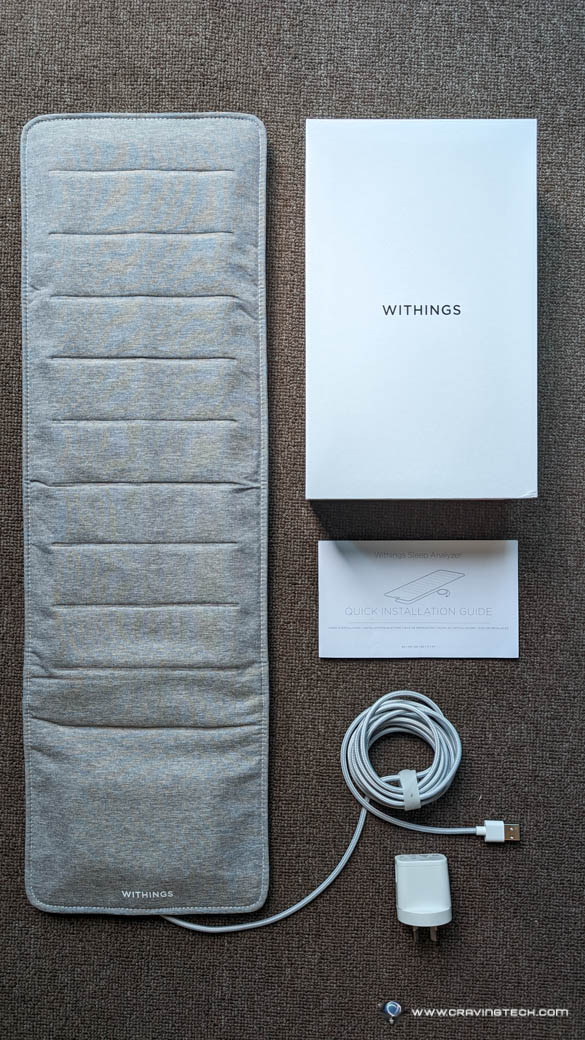
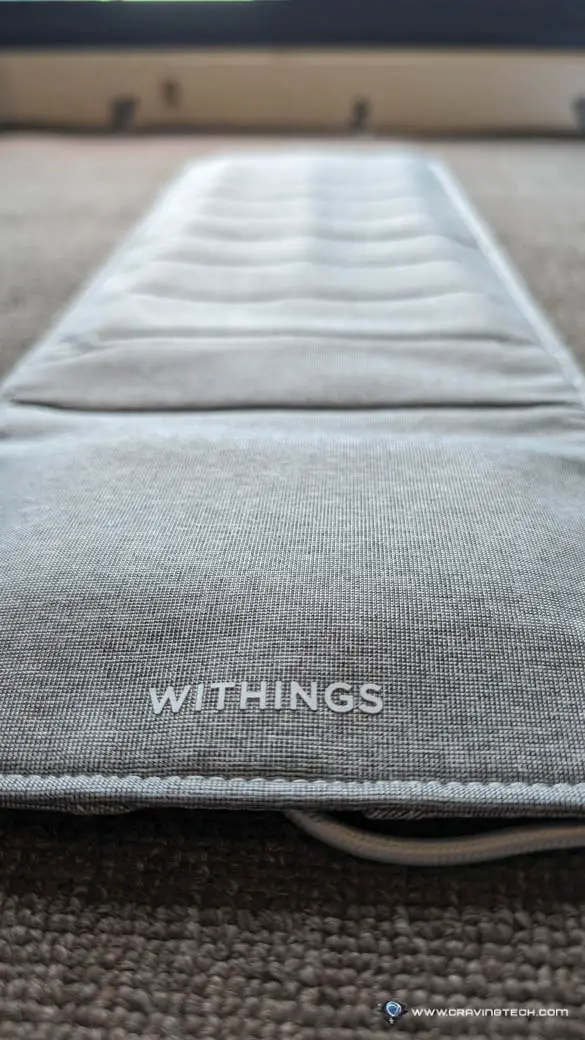
Withings Sleep Analyzer Review – Setup
Setup is very simple. Firstly, slide the device under your mattress, positioning it where your chest will be (if your mattress has slats like mine, Withings recommends angling it slightly for maximum contact or placing a flat surface like cardboard underneath). Then, plug the sensor into a power outlet using the provided adapter. Finally, open the Withings app, add the device, and follow the in-app instructions. The machine will calibrate for 10 minutes, and it’s ready to go.
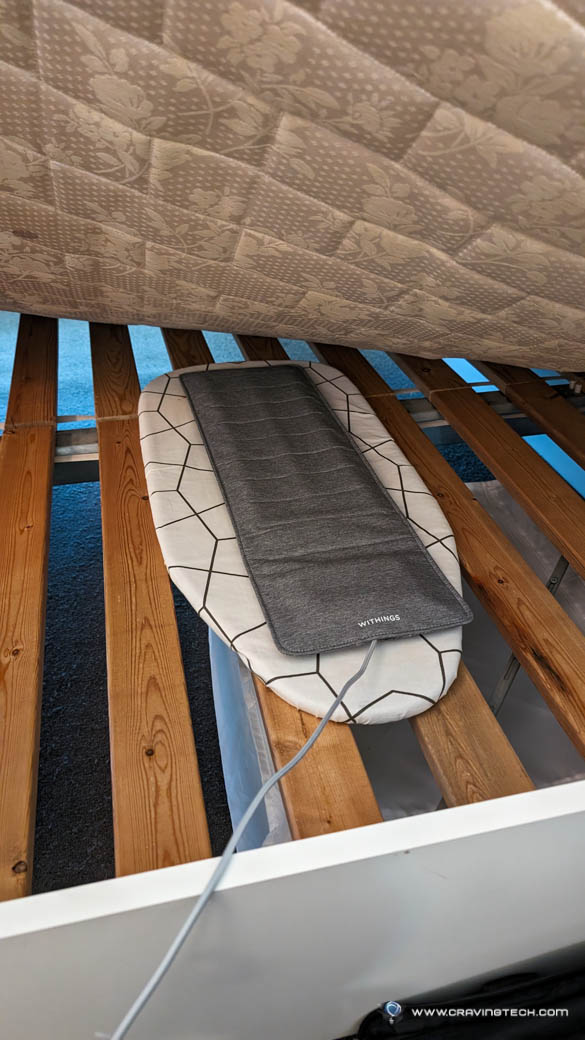
How does it function?
Utilising a “pneumatic sensor”, which “measures respiratory rate, heart beats via ballistocardiography and body movements across the mattress”, it feeds this data into an algorithm to track various sleep parameters. It also utilises a “sound sensor”, which “identifies audio signals specific to snoring & cessation of breathing episodes.”
Withings Sleep Analyzer Review – Features
Sleep tracking
- Monitor your sleep duration.
- Detects sleep cycles, including REM, light, and deep sleep. The ScanWatch Light only detects light and deep sleep. However, I am aware that other smartwatches do detect REM sleep as well.
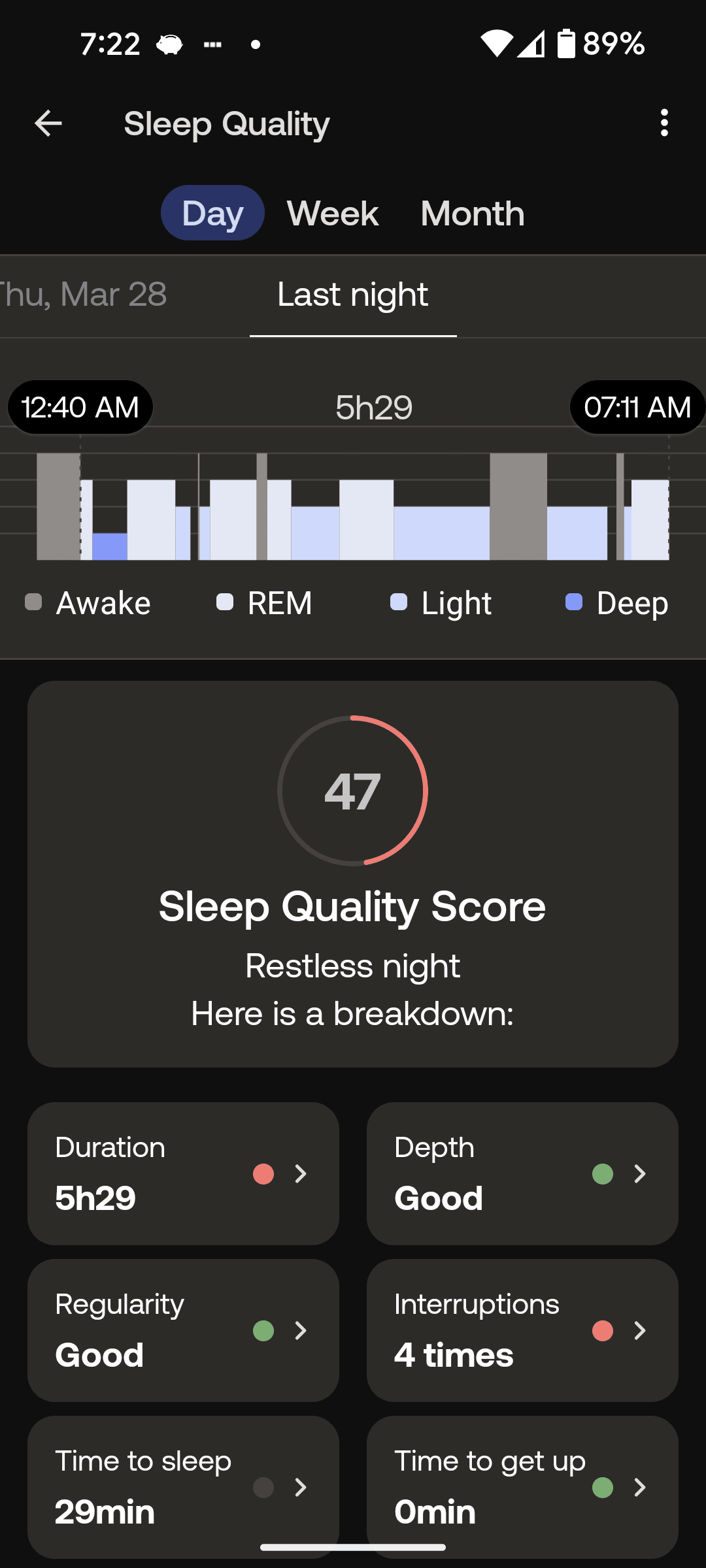
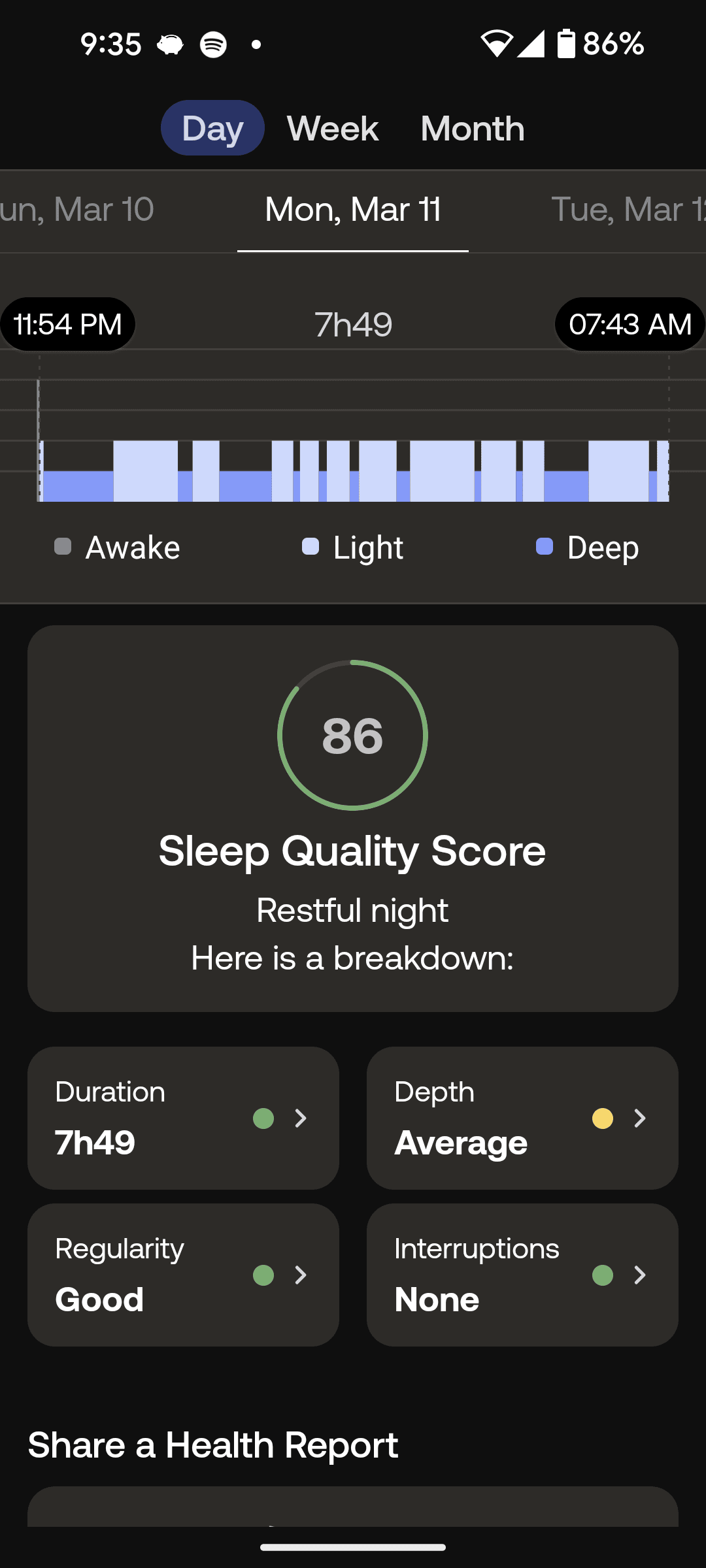
Left: Sleep Analyzer. Right: Scanwatch Light does not detect REM sleep, time to sleep and time to get up
- Track interruptions by counting how many times and for how long you woke up during the night.
- Assess sleep regularity by comparing bed and rise times over several days, providing insight into your sleep schedule consistency.
- Provide time to sleep and time to wake metrics.
It then utilises all this information to give you a sleep quality score in the morning
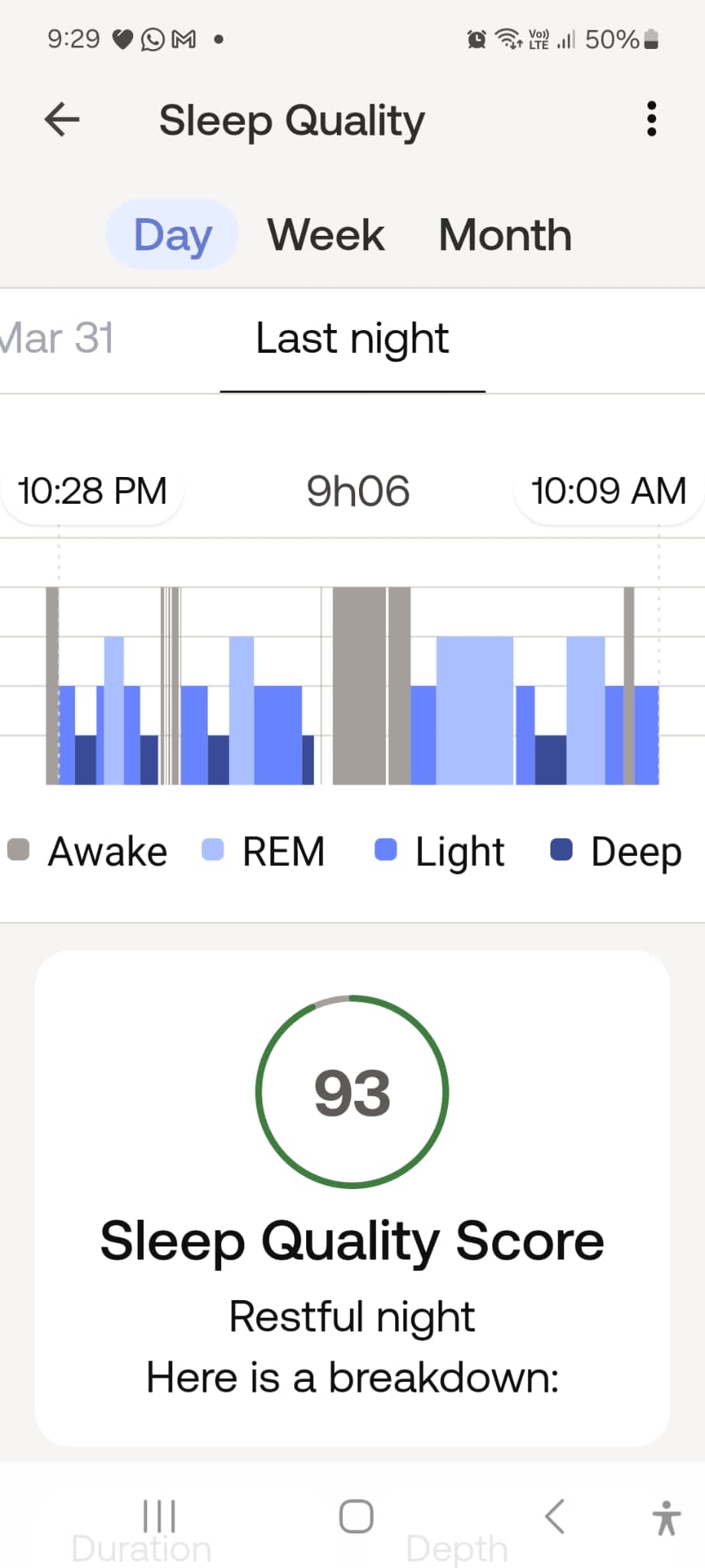
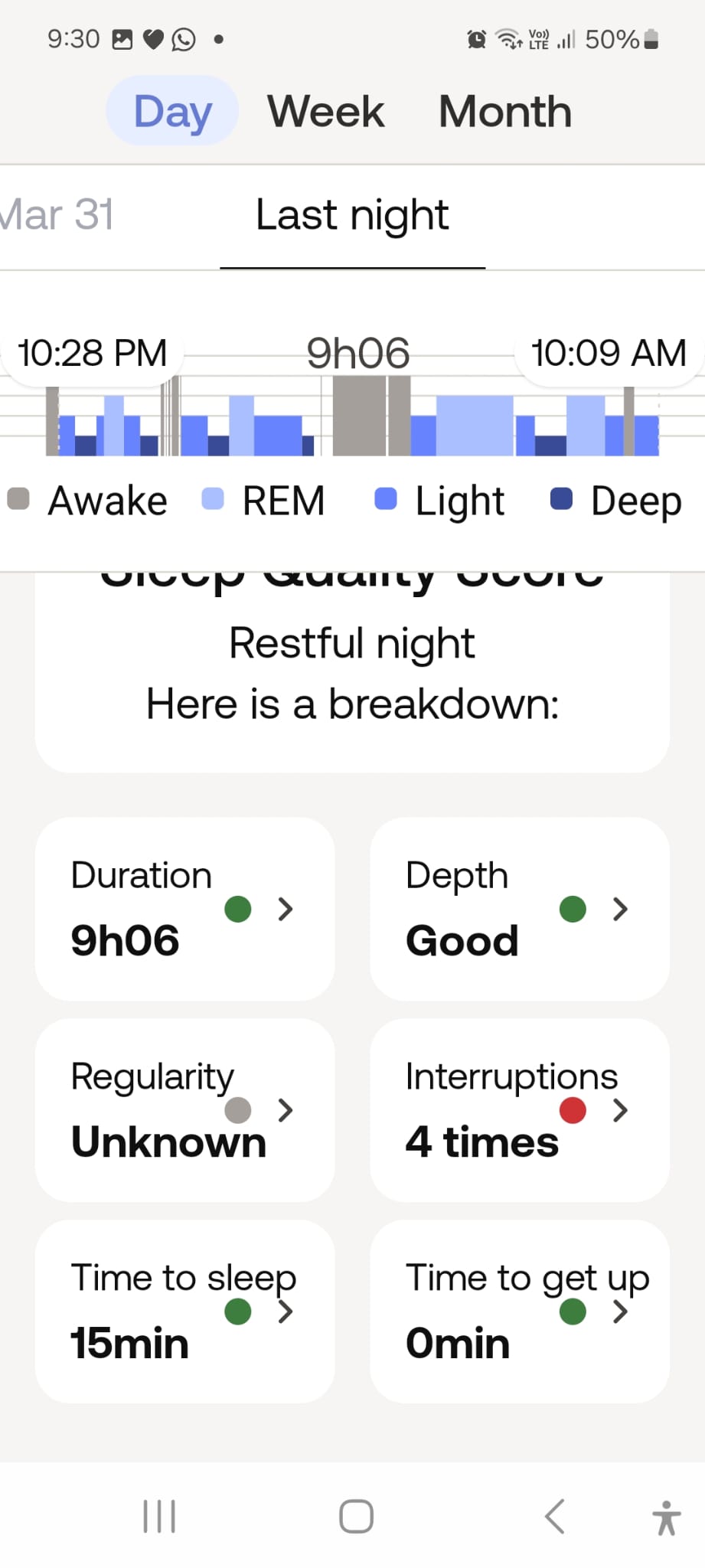
Heart rate and snore monitoring
Withings Sleep Analyzer provides continuous and average heart rate throughout the night, with the ability to track heart rate trends over the quarter or the year. It can also detect snoring episodes and duration. I’ll discuss how well it does so later in the review.
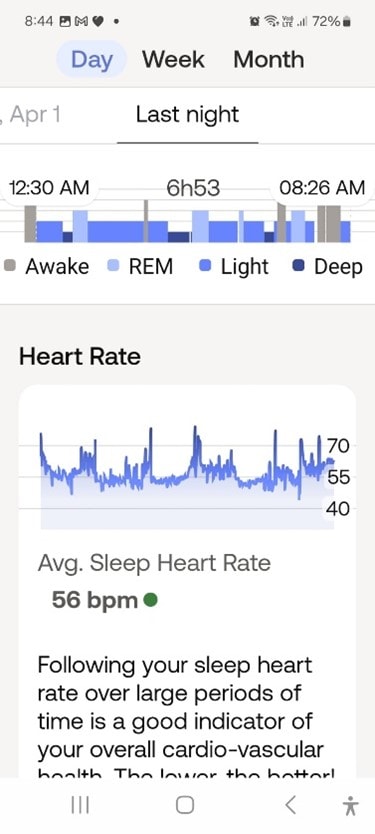
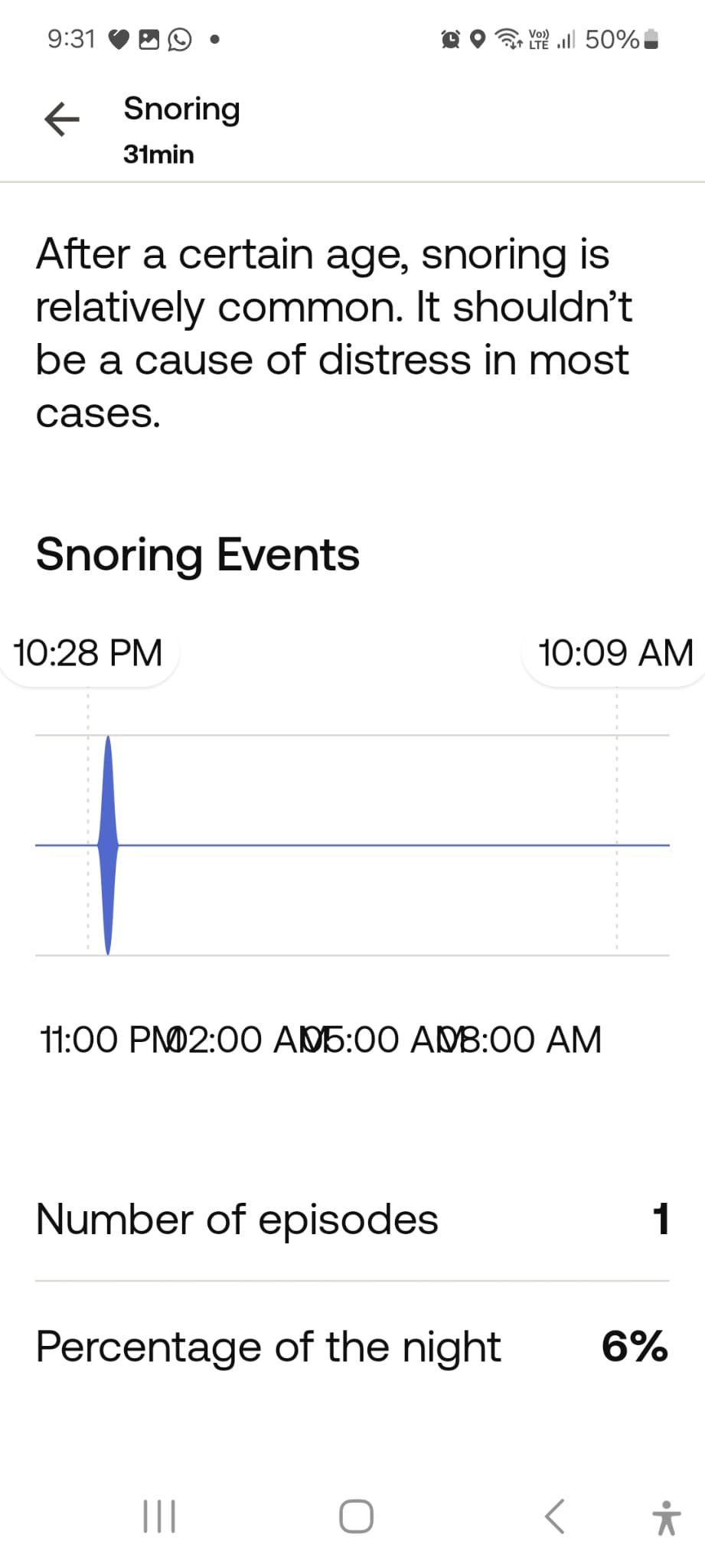
Sleep apnoea monitoring
According to the Withing’s website, the “Sleep Analyzer contains the world’s most advanced sensors and technology to analyse sleep quality, estimate the average number of sleep apnoea episodes per hour, and detect the severity of sleep apnoea for a given user/night. Sleep Analyzer tracks some precious parameters including snoring and thoracic activity as well as physiological parameters, such as heart activity through ballistocardiography. Its algorithm is powerful and has been trained and validated on a large cohort of apnoeic patients at Hôpital Béclère (France).”
It has reportedly been medically certified and rigorously tested and compared to the gold standard of sleep tracking: polysomnography – so it should be quite reliable in tracking sleep apnoea.
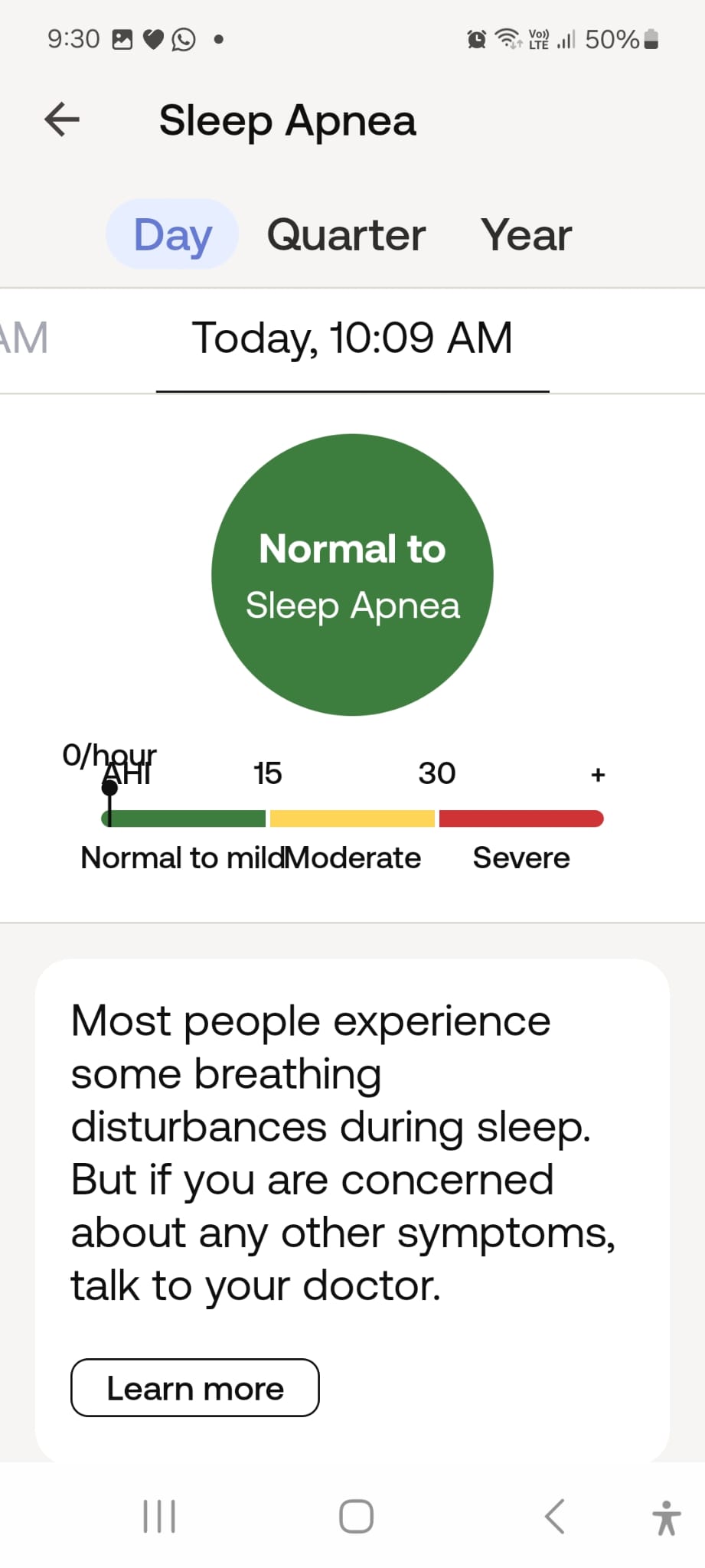
My experience and comparison with the Withings Smartwatch
I’ve been using the sleep analyser for the past 16 days, and before that, I’ve been regularly using the Withings ScanWatch Light smartwatch to track my sleep, which also syncs directly into the Witings App. Here, I’ll compare my experiences with both.
Unsurprisingly, the Sleep Analyzer offers more a comprehensive array of sleep diagnostic parameters – particularly REM sleep tracking, time to sleep and time to wake, snore monitoring, and sleep apnoea detection, which are absent in the smartwatch. However, heart rate tracking results are similar with both devices.
Moreover, while I don’t particularly mind wearing a smartwatch to bed, I can’t deny that not having to do so is not just more comfortable but also more convenient.
On the last day of my testing, I used BOTH the smartwatch and the Sleep Analyzer simultaneously (connected to different Withings accounts so I have both data readily available). And here are the results:
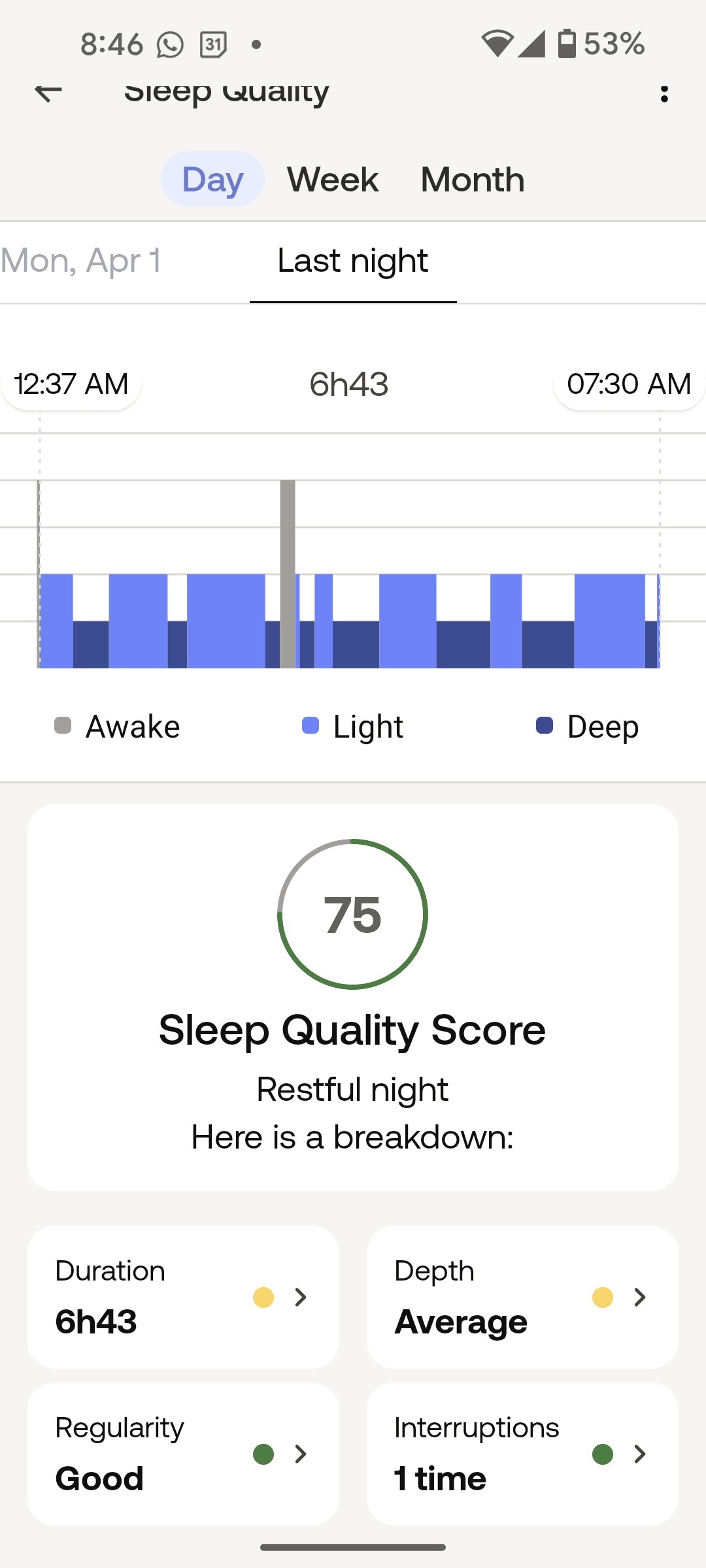
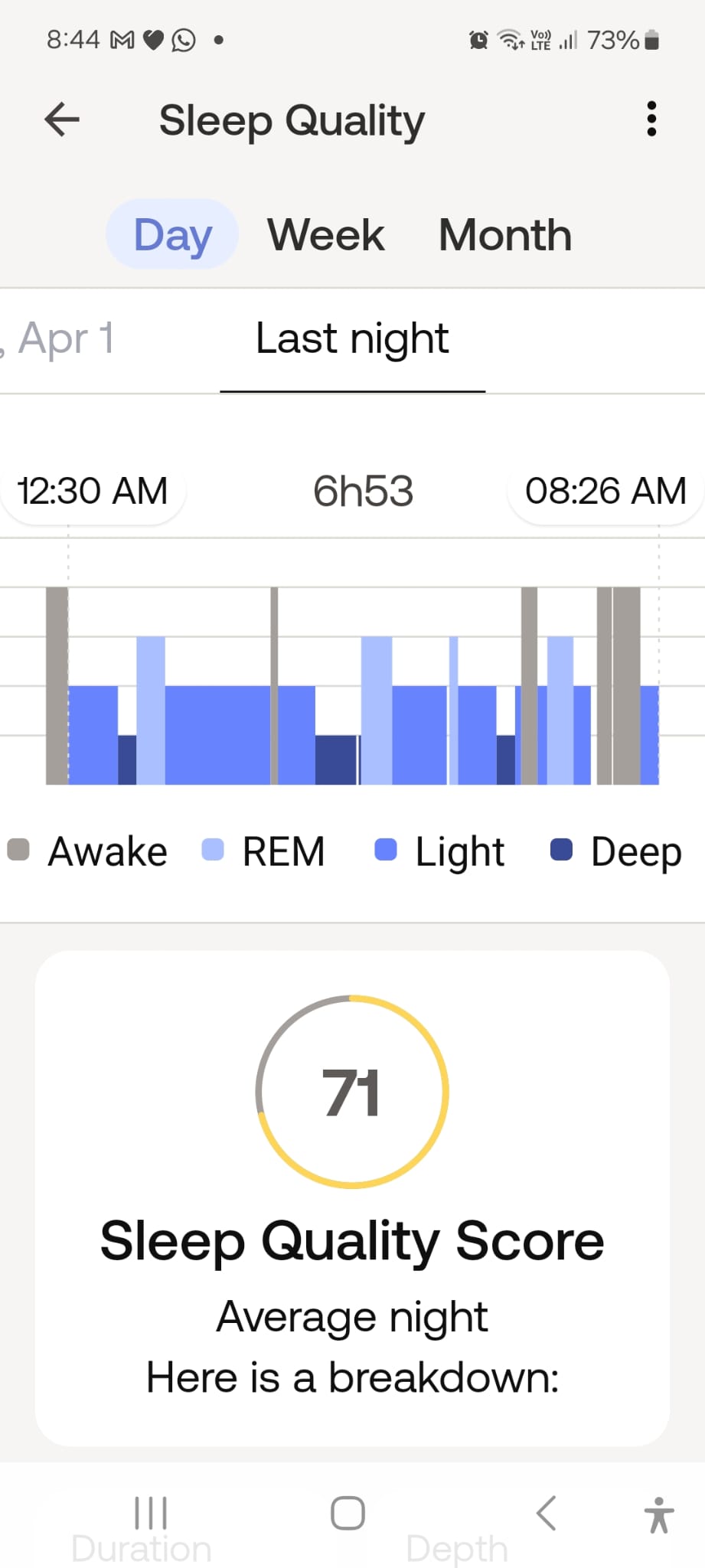
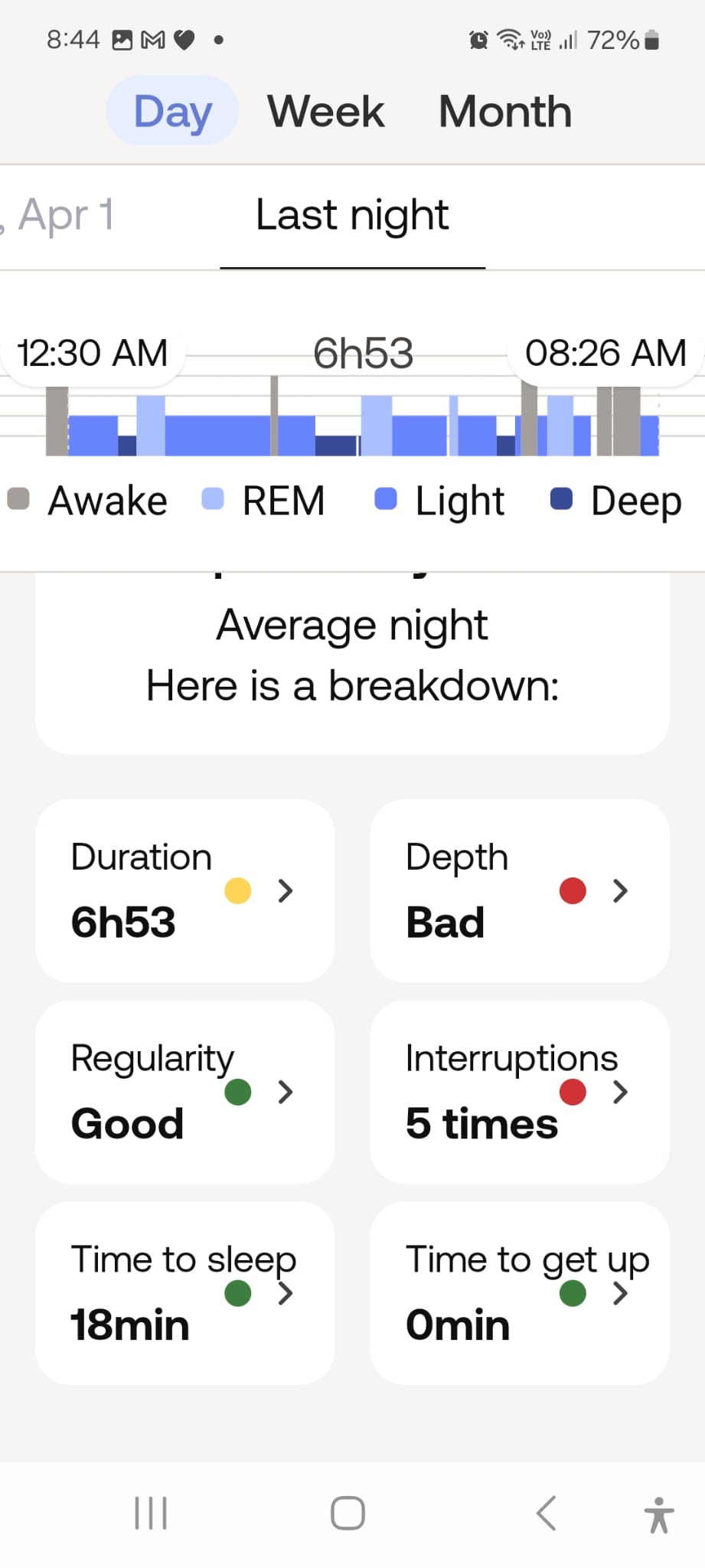
ScanWatch Light (Left) vs Sleep Analyzer (Two on the Right)
Overall, the results are quite similar – both devices accurately detected my brief waking period at 3 am and provided similar patterns of light to deep sleep.
However, the most glaring difference is in the number of interruptions. Upon waking at around 7.30 in the morning and spending an hour in bed on my phone, the smartwatch stopped detecting sleep activity, while the Sleep Analyzer registered some of this time as sleep, and likely interpreted any movements during that hour as interruptions.
Sleep apnoea detection
Regarding sleep apnea detection, neither I nor anyone in my household has been diagnosed with sleep apnea, and luckily the Sleep Analyzer did not detect any apneic episodes during the past two weeks. So, no false positives there, at least!
Disadvantages
Since the tracker must be placed around chest/heart level, doesn’t cover your entire bed area, and is not attached to your body, you have to stay relatively within the 64×20 cm area of the detector for the whole night in order for it to accurately track your sleep. The first night I put the tracker a bit too far onto one side of the bed, while I tend to sleep more towards the middle. So, this is the result:
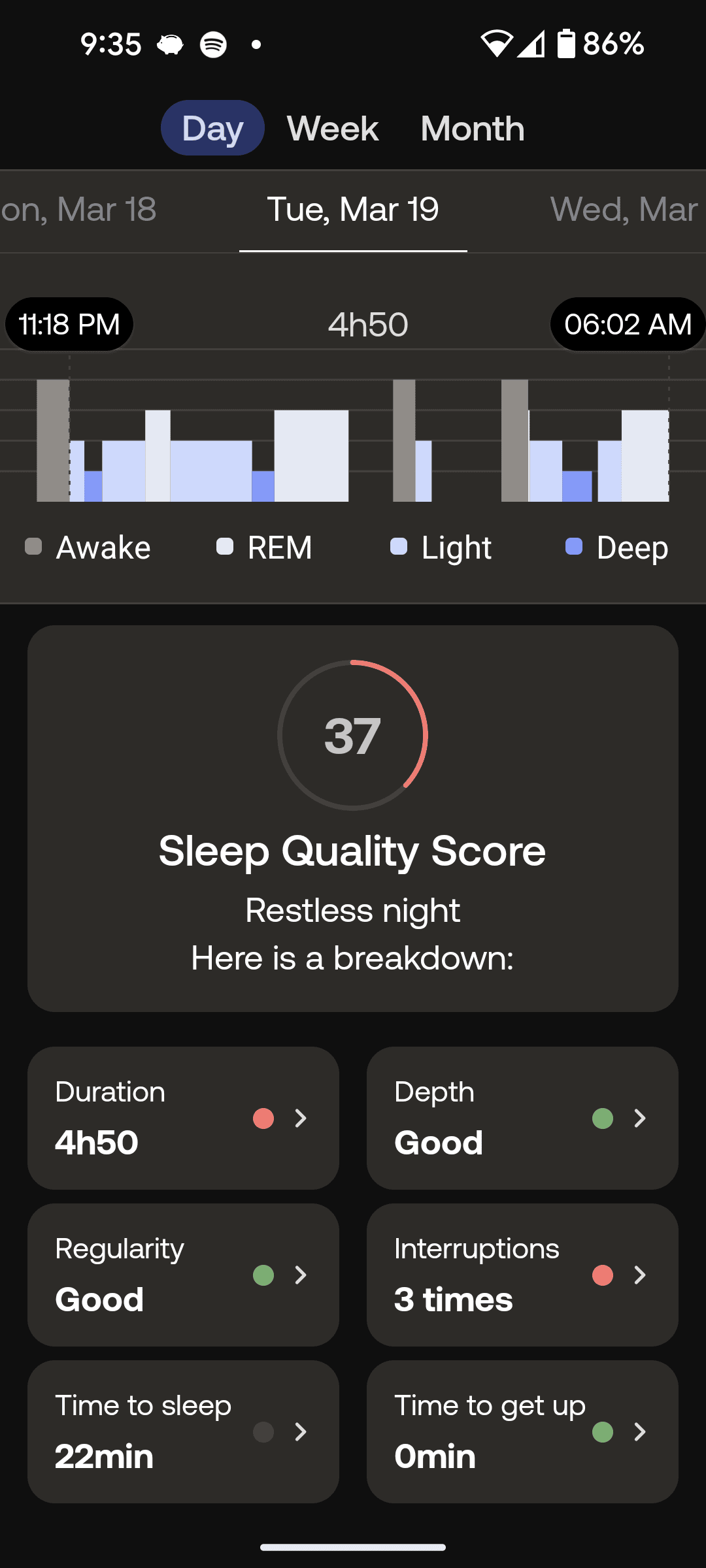
As you can see it failed to detect my sleep for significant portions of the night. So, keep this in mind if you tend to move around a lot during sleep.
Finally, I’m still not 100% certain how consistent the snore detection is. While some nights the Sleep Analyzer did not detect any snoring episodes, my smartphone’s snore detection feature, along with observations from a family member, detected some snoring.
Withings Sleep Analyzer Review Summary
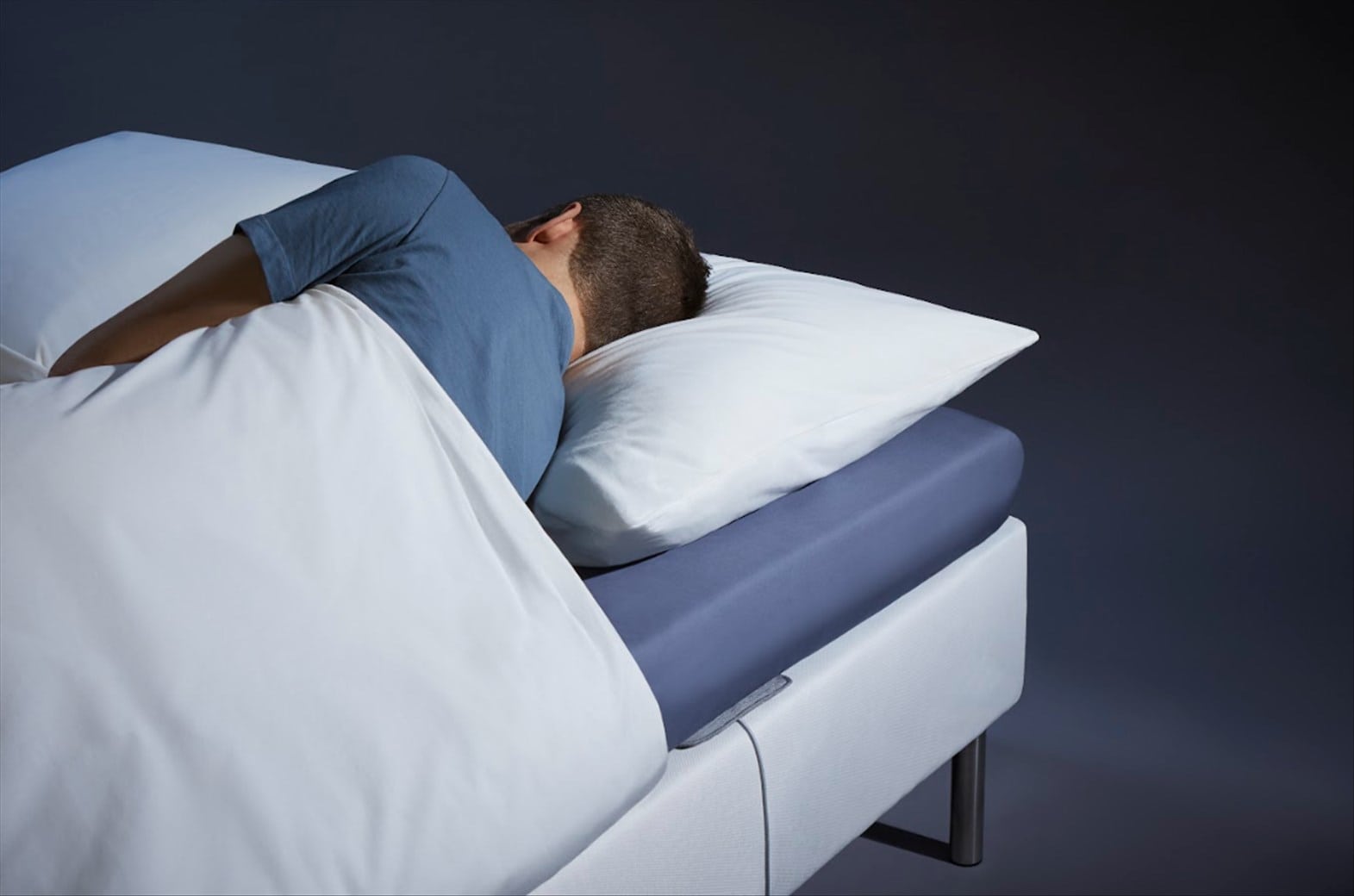
Overall, Withings Sleep Analyzer is a compelling option if you’re looking for comprehensive sleep tracking, especially with its medically certified sleep apnea detection. It’s convenient as there’s no need for wearables and it doesn’t require charging. For $199 AUD, despite some limitations (need to remain within detector’s area during sleep, potentially some inconsistency with snore detection, and prolonged post-wake periods in the morning being detected as sleep), it’s a great tool for monitoring and improving sleep quality.
Disclosure: Withings Sleep Analyzer review sample was supplied for reviewing
Withings Sleep Analyzer Review
Overall
Summary
The Withings Sleep Analyzer offers comprehensive sleep tracking features including REM sleep monitoring, heart rate tracking, and snore detection, making it a convenient alternative to wearing a smartwatch to bed
Pros
- No wearables needed – simple one-time setup, and you can enjoy sleeping without the discomfort of wearing a smartwatch
- No charging required
- More in-depth sleep tracking:
– Offers all sleep tracking features of the ScanWatch including sleep duration, regularity, interruptions, depth, and monitoring of heart rate, light and deep sleep
– But also additionally detects REM sleep, time to sleep, time to wake, and continuous snore monitoring - Medical Grade sleep apnea detection with severity classification
- Syncs quickly to Withings App – health data is also easily downloadable and shareable to medical professionals
Cons
- Requires that you don’t move beyond the bounds of the detector in your sleep
- Snore detection can be inconsistent
- Staying in bed for a while after waking may be detected as sleep






